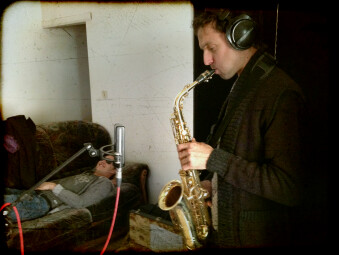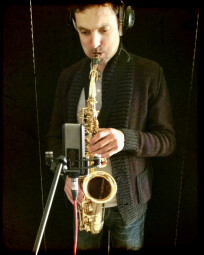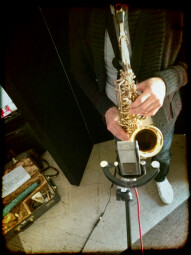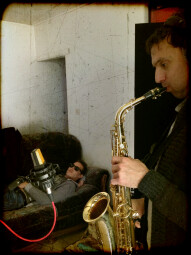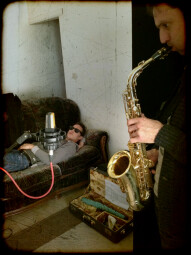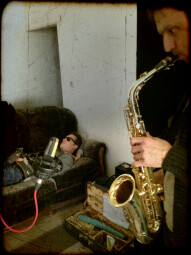Invented by a great Belgian clarinet master around 1840, it is just as widely used in classical music as it is in pop or contemporary music. But it's definitely in jazz where it has gained more prominence, thanks to artists like Charlie Parker, Ornette Coleman, John Coltrane, and Cannonball Adderley. A wind instrument from the brass family, it owns its name to its creator Antoine-Joseph Sax: the saxophone!
Particularities
Unlike what we saw in the previous article regarding the trombone, in the case of the sax, sound does not only come out of the horn. Hence, a single microphone placed in front of it won’t be nearly enough to get a satisfying result. Which is a good thing when you think of it, since the saxophone can produce very high levels of SPL. Trust me, your mics will be really grateful for not exposing them directly to the horn of a sax!
Another characteristic of the sax, regardless of whether it’s a baritone, tenor, alto or other type, is that it produces what I call a “precise” and “fleshy” sound, for the lack of other words. So you need to pay special attention to the body, the fullness of the sound. This means you can forget about the omni polar pattern, since the latter has the unfortunate tendency to thin out the sound of the sax.
The last particularity you should consider has to do with the playing of the saxophonists themselves: they tend to move around a lot, which makes it difficult to capture an homogeneous sound. Fortunately, there are some solutions, as we’ll see later on.
On track
Today, I’ll work with an alto sax, but this method applies to any type of saxophone.
I’ll start this session with a dynamic cardioid mic, the Sennheiser e609. In terms of distance, I’d say somewhere between 8 to 20 inches (20 cm and 50 cm) ought to be quite reasonable. The capsule of the mic should point towards the middle of the instrument. The left hand of the musician is an excellent reference point to start out.

This placement can be very interesting for pop or rock, but the slight dynamic crushing that takes place won’t be the best for songs requiring more subtlety regarding playing articulations.
For the second audio clip I used a ribbon mic (the Sontronics Sigma) placed very similarly (see pictures).

The typical smoothness of ribbon microphones in the high end is very pleasant here. On the other hand, the figure-8 polar pattern captures the right amount of “air” from the room making the sound a bit more lively. Granted, it won’t suit all styles, but it does have a special charm to it, doesn’t it?
For the last three examples I used the classic AKG C414 condenser mic in cardioid mode placed at almost the exact same distance. But this time I decided to tilt the mic a bit towards the mouthpiece and reed, taking the left hand as a reference again, but more towards the horn (see picture).

- Sax recording with AKG C414 – horn 00:43
- Sax recording with AKG C414 – neutral00:43
- Sax recording with AKG C414 – key00:43
The first thing you’ll notice is that the condenser mic is more precise than the rest, both regarding the high end and dynamics. However, the typical C414 bump seems a bit aggressive. Fortunately, tilting the mic you’ll be able to reduce the phenomenon, if needed. The second thing to take home from these examples is that the inclination of the capsule with respect to the instrument, however slight, plays no minor role in the end result. So this is where you’ll have to focus your efforts in order to adapt the sound of the instrument to your production needs. Do note that this tilting can also be applied to other types of microphones.
One last advice before we call it a day. As I mentioned earlier, saxophone players tend to move quite a lot when playing, which has a major impact on the sound since the inclination of the mic in relation to the instrument is never the same. How to get an homogeneous result, then? A path to explore is the distance from the source: the farther the mic the less important the angle variations will be. But be careful because this results in two other phenomena: First, you’ll get less “fullness” and, second, you’ll get less direct sound and more room, which might turn into a bigger problem if the acoustics of the room aren’t good enough. It’s up to you to find the right compromise! There are other tricks to solve the issue of constantly moving musicians, but I’ll address that in a future article…
Acknowledgments
Saxophonist, guitarist and singer, Fabrice Ducognon is a multi-instrumentalist and composer whose musicality has always touched me. Also known as “Le Druide” by many musicians, his wisdom is a peaceful but powerful force, which has led him to constantly explore new horizons, from jazz with Yün and the IOM Trio, to world music, as part of the Ensemble Joia. He is currently working on a new Chanson-like project called Effdé where I have the honor of singing backing vocals.
A big thank you to Druide. I can’t wait for autumn to be over to be able to finally hear the first Effdé album!



